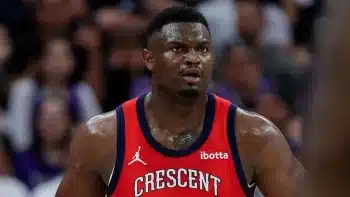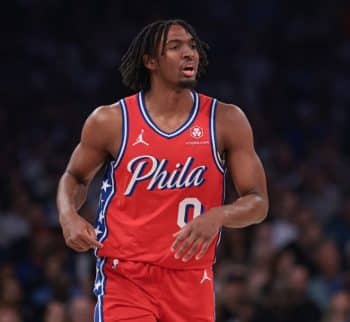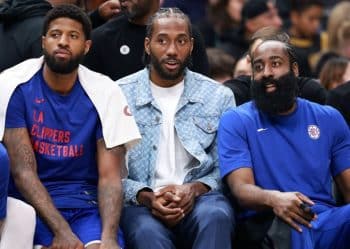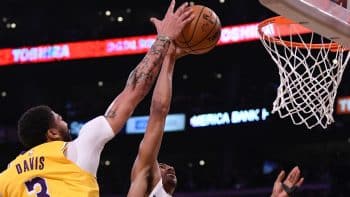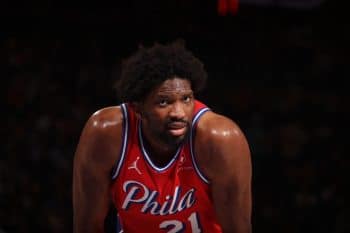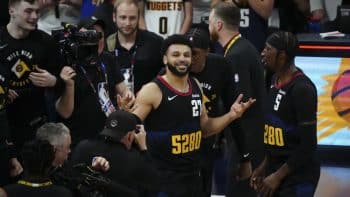NBA
NBA PM: Should Knicks Use Stretch Provision on Calderon?

Should the Knicks Use the Stretch Provision on Jose Calderon?
In a spate of interviews last week, New York Knicks president Phil Jackson declared he had done a “great job” during his first year in New York and deserved consideration for Executive of the Year because he was successful in “shedding contracts that put [the Knicks] in position where we have this flexibility.”
In actuality, the first significant trade that Jackson made, back in June of 2014, actually added salary commitments to the New York payroll, which will inhibit the Knicks’ spending in each of the next two summers.
Last summer, just a day before the 2014 NBA Draft, Jackson acquired Jose Calderon, Wayne Ellington, Shane Larkin, Samuel Dalembert and two second-round selections in the 2014 draft (34th and 51st overall) from the Dallas Mavericks in exchange for Tyson Chandler and Raymond Felton.
Chandler had just one year left on his contract, while Felton had two years and $7.7 million remaining.
Calderon, meanwhile, had three years and $22.2 million left on his deal. The trade was made before Jackson knew the Knicks’ 2014-15 campaign would go up in flames, so the hope was that Calderon would provide much needed consistency and production at the point guard position. However, Calderon struggled mightily, shooting a career-worst 41.5 percent from the floor and dished out fewer than 200 assists for the first time in his NBA career. His efficiency and effectiveness were hampered by a calf strain that cost him the first 13 games of the year and by a nagging Achilles injury that effectively ended his season in late February. All told, he appeared in just 42 games.
In his prime, Calderon was one of the most accurate long-range shooters in the NBA. In fact, at the start of last season, he and Steve Nash were the only two active players shooting over 47 percent from the floor, 87 percent on free-throws and 41 percent from three-point territory for their careers.
But which Calderon can the Knicks expect next year?
Calderon will be 34 years old on opening night of the 2015-16 season. Is it fair to expect him to bounce back and replicate the player Jackson and the Knicks thought they were trading for? Is he capable of starting and playing significant minutes? Never a good defender, how many opposing point guards will Calderon be capable of even containing over the next two years?
Besides on-court issues, the more pressing problem is that Calderon’s salary inhibits the Knicks’ ability to add pieces this summer and next.
Ideally, Jackson would be able to unload Calderon and his bloated contract (now with two years and $15.1 million remaining), but finding a trading partner willing to take on that money will likely prove extremely difficult, especially considering the fact that New York has very few appealing assets to package in such a deal. The Knicks have already traded away their 2016 first-round selection (in the ill-fated deal for Andrea Bargnani), which means the earliest first-round pick they could move would be their 2018 selection.
Even if Calderon returns to a relatively improved level of play, will he be worth the $7.4 million he will be paid this season, let alone the $7.7 million he is set to make in 2016-17?
Right now in New York, carving out as much cap-space as possible is the primary objective. Thus, might it make sense for New York to consider waiving Calderon via the “stretch” provision?
Per Basketball Insiders contributor Larry Coon’s “CBA FAQ,” the stretch provision works like this: “If the player’s salary payments are spread-out using the stretch provision, the team may elect to stretch the salary cap charge to match. For example, if two seasons remain on the player’s contract when he is waived, and the payment is spread-out over five years per the stretch provision, then the team may elect to spread-out the salary cap hit over those same five years.”
In this specific situation, Calderon has two years and $15,111,239 million left on his current contract.
Thus, if the Knicks were to waive Calderon between July 1 and August 31, they would be able to “stretch” his remaining salary over five seasons.
Going forward, the annual salary cap commitment to Calderon would be $3,022,248 million each season, for the next five seasons.
However, that number could be further reduced if/when Calderon signed a new contract as a free agent (assuming no one picked him up off waivers), via the “right of set-off.”
Coon explains: “If another team signs a player who has cleared waivers, the player’s original team is allowed to reduce the amount of money it still owes the player (and lower their team salary) by a commensurate amount. This is called the right of set-off… The amount the original team gets to set off is limited to one-half the difference between the player’s new salary and the minimum salary for a one-year veteran.”
The minimum contract for a one-year veteran for the 2015-16 season will be approximately $845,000. It’s tough to predict what a market for Calderon might look like, but if he inked a deal in the neighborhood of $3 or $4 million, the Knicks’ future salary cap commitments could be further reduced by as much as $1.5 million.
Thus, using the stretch provision on Calderon would create incredibly valuable cap space in the summer of 2015 and 2016. At the very least (i.e. even if Calderon does not sign a contract with any team after he is waived), New York would be looking at extra $4.4 million in cap space this summer and $4.7 million in the all-important summer of 2016.
That extra $4+ million could end up being crucial. We have seen the steps so many teams have taken in the past to eek out even the slightest bit of space. (Back in 2010, solely in order to dump the one year left on Jared Jeffries’ contract, the Knicks traded away their 2009 first-round pick Jordan Hill, and also gave Houston their 2012 first-rounder and the right for the Rockets to swap first-round picks in 2011).
The long-term downside of waiving Calderon would be having $3 million of dead salary on their books through 2020. In addition, the immediate hit would be losing their starting point guard. Make no mistake, New York is a more formidable team with a healthy Calderon. Exactly how much better is obviously difficult to quantify, but it’s safe to assume New York would be projected to win more games in 2015-16 with Calderon on their roster. Still, if the Knicks were going to win, say, 35 games with Calderon versus somewhere in the neighborhood of 30 games without him, in what direction does the cost/benefit analysis lead us?
In addition, the loss of Calderon would be somewhat less impactful because Jackson did a masterful job on draft night last week, trading the one-dimensional Tim Hardaway Jr. for the No. 19 overall selection, which he used to select point guard Jerian Grant from Notre Dame. Grant is not your typical inexperienced rookie; he’ll be 23 years old on opening night and he’ll be ready to contribute right away. He spent five seasons at Notre Dame and received plenty of seasoning playing in the Big East and for a coach (Mike Brey) who implements a pro-style offense. In college, Grant dished out a total of 690 assists during his Notre Dame career, which was more NCAA assists than the first 15 picks in the 2015 draft combined.
Looking at the big picture, the reality is that it’s extremely unlikely that Calderon will be a core contributor for a Knicks team that is a serious contender. However, the free agents that the Knicks will sign this July and in the summer of 2016 are hopefully the pieces that put the Knicks back on track toward respectability and playoff prominence. If they stretched Calderon, New York could be looking at upwards of $31 million in total cap space this summer, which would allow them to make a run at two top-tier players to pair alongside Carmelo Anthony (and newest Knick Kristaps Porzingis), or target a handful of less expensive players in hopes of adding much-needed depth across the board.
It’s not an easy decision for Jackson and the Knicks’ brain trust, if for no other reason, it would mean admitting the Chandler/Calderon trade was a mistake. In addition, the Knicks would lose a valuable point guard and solid locker room presence (and a possible mentor to Jerian Grant), which would hurt New York’s chances of showing immediate improvement in 2015-16.
However, the top priority for the Knicks going forward should be building a roster that can eventually compete at a championship level. These next two summers, when the Knicks will finally have abundant cap space for the first time in nearly two decades, are momentous. The Knicks have an opportunity to reshape and rebuild the franchise. In this quest, every dollar counts. For that reason, it may make sense to bite the bullet and say goodbye to Jose Calderon sooner rather than later.
